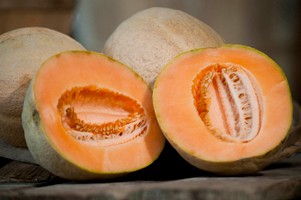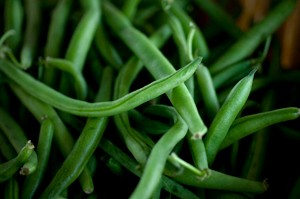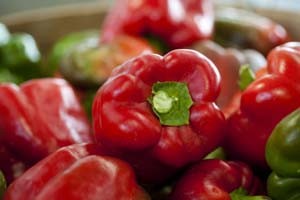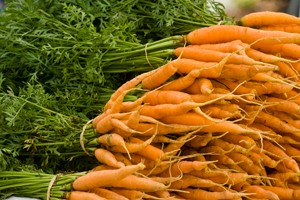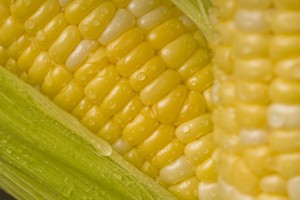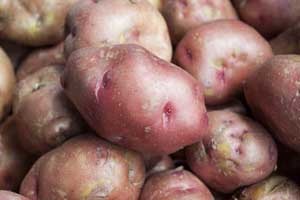Tennessee Farmers Market Tips
Find success at your local farmers market by knowing what’s in season and how to care for what you buy. Take a look at these tips, and you’ll be ready to get the freshest and best the next time you head to the local farmers market. And remember: always look for the Pick Tennessee Products logo! It’s your guarantee that the product you purchase is as fresh and local as it gets.
At the market:
- Arrive early—specifically, before 9:00 a.m. if it’s an all day market. The early bird does indeed get the worm-- or in this case, the okra or green beans.
- Come prepared. Bring a reusable bag with comfortable handles for easy transport.
- Bring a cooler along to keep produce chilly on the trip home. This is especially important as summer temperatures rise.
- Bring cash and small bills. Not all farmers markets accept credit/debit cards and large bills are hard for them to make change.
- Talk to the farmers. No one knows the ins and outs of food like the people who grow it. Farmers can tell you how and where your food is grown, plus how to store and prepare it.
- Heirloom tomatoes have unique flavors and colors. Don’t hesitate to ask the farmer about differences in varieties. Most will also give you a taste.
- Local honey is a great product thought to help with allergies. Look for fresh local honey in spring and fall.
- Learn what’s in season to ensure you have realistic expectations of what can be grown locally in Tennessee. Then you won’t be disappointed if your favorite vegetable is not in season yet. Don’t plan on local asparagus in August!
- Your nose knows the best cantaloupe. Sniff the stem end. It should have a great melon aroma.
- Cucumbers should have completely green outer skins. They begin to turn yellow as they age.
- Eggplant should be shiny, heavy for its size and without wrinkles.
- Peaches continue to ripen after picking. Buy them at various stages of ripeness so you don’t have use them all at once.
- Be careful if you handle too many hot peppers at the market. Wash your hands promptly and avoid touching your eyes.
- Okra should be no longer than 5 inches to taste best. Never wash okra until you’re ready to use it, or it will become slimy.
- Check the bottom of the container when purchasing blackberries or raspberries. It should not be stained or moist.
- Berries do not ripen at all after picking, so look for berries that are full and plump. When purchasing strawberries, make sure you select those that are completely red all the way to the cap.
- Corn with little dents in the middle of the kernels is over mature, which results in a starchy taste and texture no matter when you pick it.
- Want to make apple butter? Then purchase a variety of different apples. It gives extra flavor to the finished product!
- Always purchase clean produce that looks as fresh as possible. Don’t be shy about asking about best use and varieties.
At Home With Your Fresh Finds:
- Store your purchases properly. Fresh food and plants are easily damaged and bruised.
- Store leafy greens in a loose, open plastic bag in your refrigerator.
- Store tomatoes with the stem end up. Tomatoes continue to ripen after picking, so don’t worry about some green at the top. Never store tomatoes in the refrigerator, as they will quickly lose flavor.
- Don’t wash berries until you are ready to use them. Try to use berries within three or four days of buying them.
- Treat cut herbs like flowers and stand them in a vase with water. If you purchase herbs as live plants, pay close attention to the sun requirements.
- Store tomatoes with the stem end up, as it grows on the vine. The shoulders are the most tender part and bruise easily. Tomatoes will continue to ripen some after picking, so don’t worry about a little green at the top. Never store tomatoes in the refrigerator, as they will quickly lose their flavor.
- Don’t wash berries until you are ready to use them; the best way to keep them is in a single layer on a baking sheet. Try to use berries within three or four days of buying them.
- Freeze berries of all kinds by laying them carefully on a baking sheet and placing the sheet in the freezer. Once they’re frozen, then bag them up in freezers bags. That way, they’ll pour out easily instead of freezing into a hard lump.
- Root vegetables such as beets, carrots and turnips should have the tops removed as soon as you get home. The tops pull moisture from the roots, shortening their shelf life.
- Winter squash varieties keep well if stored in a cool, dry place. Look for those with no cuts in the skin or soft spots.
- Remember that hard shelled squash varieties are not only great fall decorating items, but are also edible. If too hard to cut in half, bake it whole at 350 degrees until tender. Then it slices easily.
